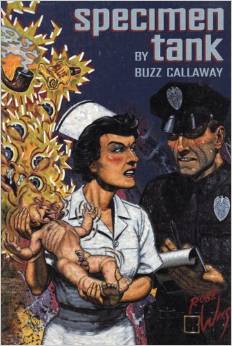Of Plots and Tomatillos
It is now commonplace to say that human beings require narrative to understand things. Cognitively we construct narrative explanations of non-narrative events, that is, events without conscious actors. That’s just how we think and understand and there is no going around it, it is the ineluctable modality of the narrative. A mathematical formula is an example. E=mc2 is a narrative describing the relationship between matter and energy. The equals sign says this is that. The theory of natural selection is also a narrative, a story of how life evolves. Biological sciences are always getting into trouble for narrative explanations that imply intention where there is no intention. Evolution happens on a time scale, and on a molecular level, that precludes conscious intention. But of course there is intention, in that animals intend to survive. The random elements are environmental change and random mutation of the genome. And there is now evidence that the epigenome is both heritable and affected by individual behavior.
Scientists mostly believe that narratives are human descriptions or stories, necessary for our understanding, about events that are not inherently narrative. Their meaning is for us. Others might say, more philosophically, that we are part of nature and therefore narrative understanding is an evolution of mind, a part of nature, and a recognition of pattern and order.
Cause and effect is the most elementary narrative. A higher order narrative is a plot. Plots are basically cause and effect. And plots are few in number. There are 7 or 8 or 10, depending on the authority. One writer I know, quoting perhaps, asserts there are two: a person leaves town and a person comes to town. Think of Katie Cruel:
When I first came to town, They called me the roving jewel; Now they’ve changed their tune, They call me Katy Cruel
On the level of genre,  plot is an analogue for life itself. Comedy is falling in love and getting married, tragedy is discovering you are mortal, fighting against it, and dying. Tragedy and comedy introduce irony into the picture, which is there in biological theory already: the creature intends to survive, but things don’t always work out the way we intend. Gardens and sports are examples of deeply ironic narratives.
Sports are a perfect narrative. A story constructed by an author with a beginning, middle and end can only simulate uncertainty. The reader knows the 5, 7 or 10 or 2 plots and genres, knows how things ought to turn out, and can only go along with suspense and interest by playing the game. The pleasure is uncertainty, in a context of certainty. Because Hamlet dying of dysentery contracted onboard the pirate ship would be very disappointing. In sports, all of the elements of plot have been perfectly laid, but the result is genuinely uncertain, and baseball of course is the grandest of all. That’s why artists love baseball. Everything is structured, there are rules, there are characters, but the execution is improvisatory and the random element is strong.
Gardens are heartbreakers in this regard. Everyone, the gardener and the plants, intends to survive. You prepare the soil, balance the pH, supply nutrients, water, sun and trellises for support. You weed. You select plants that do well and plant them at the correct time. Then weather happens. Or your mother is sick and you don’t fulfill your end of the contract. Because you’ve selected plants that can’t survive without your effort, you are part of the narrative. You can save the day or blow it, or be hopeless in the face of impersonal forces.
Thehope is always that the garden story will be comic: despite adversity, abundance will follow. I’ve planted more or less the same things every year in my various gardens. I plant a diversity of things because I’m a realist. Some or many will fail. I’m also human, so loony optimism, the right of every gardener, is in great supply.
One thing I’ve planted in the past, pessimistically, is the tomatillo. I love tomatoes, but I also love its sticky, papery husked, piney tasting relative. Raw in a salsa cruda with corn, peppers, onions, garlic, lime and cilantro it is bracing and addictive. Roasted and pureed it makes a rich, smoky, base for stews. But I have never had much luck with the sprawling, monstrous plants. And every time I plant them, while I don’t eat more than a handful, I do get scores of anemic volunteers, also sterile in their output. So I swore off them a few years ago and decided simply to pay the ridiculously high price a quart fetches at the farmer’s market and make the occasional salsa cruda. This year however I had a large area to fill and I thought, well, these rampant vines are good for something, and maybe I’ll get a bowl or two of salsa out of the deal.
This year, after last year’s debacle, I had high hopes for the garden, but tomatoes succumbed to late blight, as the rain in August was again biblical. Yes we’ve had plenty of delicious tomatoes, but not enough to put up in the freezer. Yesterday I bought my first box of Romas and pureed and froze them. But there in that corner has been an unexpected bounty of tomatillos! My freezer is full of puree, and whole tomatillos in Ziploc bags.
So what do you do with them? Use them like tomatoes. Here is a recipe for pork stewed in roasted tomatillos.
Pork Stew in Salsa Verde
2-1/2 to 3 lbs pork shoulder cut into cubes 1 big onion, chopped 2 jalapeno peppers chopped
1 big red or yellow peppers chopped
1 carrot cut into ½ inch chunks
¼ cup chopped garlic
1 T cumin
1 t coriander
½ t black pepper
Salt
4 cups tomatillo puree
1 t oregano
Juice of 1 lime
2 cups butternut squash cut into 1 inch chunks
½ cup chopped cilantro
Husk the tomatillos and roast them on the grill, in a hot dry iron frying pan, or under the broiler, until the skin is blistered and charred in places and they are soft. Blend in the blender. You need about 4 cups.
Salt and pepper the pork and brown over high heat in olive oil. Don’t crowd the pan! Work in batches. Set the meat aside, lower the heat to medium and cook the onions until soft. Add the peppers, carrots and garlic. Sautee for a few minutes until fragrant. Add salt, pepper, cumin and coriander and cook briefly, a minute or two, constantly stirring. Add the pork and stir to coat and flavor the meat. Add the puree, lime juice and oregano. If the meat isn’t covered, add a little water. The meat will shrink down, But you want enough sauce to stew it and accommodate the butternut squash. Simmer gently for 2-1/2 hours, stirring to prevent sticking. Add the butternut squash and, if there’s room, chopped green beans, or corn, or potatoes if you like. This, after all is a stew. When the squash is just done, taste for salt. Add more lime juice if you like. Add the chopped cilantro and serve over white rice.
Â




Fabulous! Delicious!